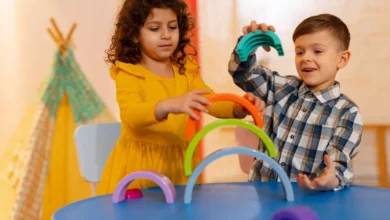Jr Geo: Revolutionizing Geospatial Education for Kids

Imagine a world where children as young as eight can navigate digital maps, analyze real-world data, and solve problems like urban planners or environmental scientists. That’s the vision behind Jr Geo, an emerging educational platform designed to introduce young learners to the fascinating field of geospatial technology. Unlike traditional geography lessons that might focus on memorizing capitals or drawing maps, Jr Geo takes a hands-on, tech-driven approach. It blends interactive tools, gamified learning, and real-world applications to make geospatial concepts accessible and exciting for kids. The platform is built on the idea that understanding spatial relationships—how things are connected across the Earth’s surface can spark curiosity and equip children with skills for the future.
Geospatial technology, at its core, is about using data to understand the world through a spatial lens. Think GPS, satellite imagery, or even the mapping apps we use to find the nearest coffee shop. Jr Geo distills these complex ideas into bite-sized, age-appropriate lessons that encourage kids to explore their surroundings, ask questions, and think critically. It’s not just about maps; it’s about empowering the next generation to tackle challenges like climate change. The urban growth, or disaster preparedness using data and technology.
Table of contents
Why Geospatial Education Matters for Kids
The world is more connected than ever, and the ability to understand spatial data is becoming a critical skill. From tracking wildlife migrations to planning sustainable cities, geospatial literacy is shaping industries and solving global problems. Introducing these concepts early can give children a head start in fields like science, technology, engineering, and mathematics (STEM). Jr Geo recognizes this potential and aims to make geospatial learning a core part of childhood education, much like reading or math.
What sets Jr Geo apart is its focus on making learning relevant. Instead of abstract exercises, kids might analyze data to decide where to build a new park. Their neighborhood or explore how rising sea levels could affect coastal communities. These activities don’t just teach geography—they build problem-solving skills, critical thinking, and an awareness of the world’s interconnected systems. By engaging with real-world scenarios, children learn that their decisions can have an impact, fostering a sense of agency and responsibility.
The Role of Technology in Jr Geo
At the heart of Jr Geo is its use of cutting-edge technology tailored for young learners. The platform integrates tools like interactive maps, 3D visualizations, and simplified geographic information systems (GIS). These aren’t the clunky, text-heavy programs you might imagine—Jr Geo’s interface is colorful, intuitive, and designed to feel like a game. Kids can drag and drop elements to create their own maps, zoom into satellite imagery to explore distant places. Even simulate environmental changes to see their effects in real time.
This technology isn’t just for show. It’s grounded in the same principles used by professionals in fields like urban planning or environmental science. By simplifying these tools, Jr Geo makes complex ideas approachable without dumbing them down. For example, a lesson might ask students to map out safe routes for a school bus, considering factors like traffic patterns or pedestrian safety. Through this process, kids learn how to interpret data, make informed decisions, and communicate their findings—skills that are valuable far beyond the classroom.
How Jr Geo Engages Young Learners
One of the biggest challenges in education is keeping kids engaged, especially when introducing complex topics. Jr Geo tackles this by blending learning with play. The platform uses gamification techniques, like earning badges for completing challenges or unlocking new levels as students master skills. This approach taps into children’s natural curiosity and love for exploration, making learning feel like an adventure rather than a chore.
The platform also emphasizes collaboration. Many activities encourage kids to work together, whether they’re designing a virtual city or solving a mock environmental crisis. This not only builds teamwork skills but also mirrors how geospatial professionals collaborate in the real world. Teachers and parents can join in too, with Jr Geo offering resources to guide adults who might be new to geospatial concepts themselves. This inclusive approach ensures that everyone, regardless of their background, can participate in the learning process.
Real-World Applications for Kids
What makes Jr Geo truly unique is its focus on real-world applications. The platform doesn’t just teach kids about maps—it shows them how geospatial skills can address pressing global issues. For instance, a lesson might involve analyzing deforestation data to understand its impact on local ecosystems. Another might ask students to design a flood-resistant community, considering factors like elevation and infrastructure. These activities connect abstract concepts to tangible outcomes, helping kids see the relevance of what they’re learning.
This emphasis on real-world problem-solving also fosters a sense of global citizenship. By exploring issues like climate change or urbanization, kids begin to understand their role in a larger world. Jr Geo encourages them to ask questions like, “How can we make our cities greener?. What can we do to protect endangered species?” These questions don’t have easy answers. They inspire curiosity and a desire to learn more—a mindset that will serve kids well throughout their lives.
Jr Geo in the Classroom and Beyond
Educators are increasingly recognizing the value of geospatial literacy, and Jr Geo is designed to fit seamlessly into classroom settings. The platform aligns with national education standards, making it easy for teachers to integrate into their curricula. Whether used in science, social studies, or even math classes, Jr Geo offers flexible lesson plans that can be adapted to different age groups and skill levels. Teachers can also track student progress through the platform’s analytics, ensuring that every child is getting the support they need.
But Jr Geo isn’t just for schools. The platform is accessible for homeschooling families, after-school programs, and even curious kids who want to explore on their own.
Building a Foundation for Future Careers
As the demand for STEM professionals grows, early exposure to fields like geospatial technology can open doors to exciting career paths. Jr Geo introduces kids to concepts used in industries like urban planning, environmental science, transportation, and even disaster response. By building familiarity with these tools early, the platform helps prepare students for future opportunities in a data-driven world.
Even for those who don’t pursue STEM careers, the skills learned through Jr Geo are universally valuable. Critical thinking, data analysis, and problem-solving are essential in nearly every field, from business to the arts.
Challenges and Opportunities
No educational platform is without its challenges, and Jr Geo is no exception. One hurdle is ensuring accessibility for all students, particularly those in under-resourced schools or communities without reliable internet access. The platform’s developers are working to address this by offering offline resources and partnering with organizations to bring Jr Geo to more classrooms. Another challenge is training teachers to use the platform effectively, especially those unfamiliar with geospatial technology. Jr Geo’s professional development resources aim to bridge this gap, but widespread adoption will take time.
Despite these challenges, the opportunities are immense. As geospatial technology becomes more integral to our lives, platforms like Jr Geo have the potential to transform education. By making complex concepts accessible and engaging, Jr Geo is paving the way for a generation of curious, capable problem-solvers.
For more insights on innovative educational tools, check out our article on AI-Powered Learning Platforms: The Future of Education.
Conclusion
Jr Geo is more than just an educational platform it’s a gateway to a world of discovery for young learners. By blending interactive technology, real-world applications, and a passion for exploration, it’s redefining how kids learn about the world around them. Whether they’re mapping their neighborhood or tackling global challenges, students using Jr Geo are gaining skills that will serve them for a lifetime. As geospatial technology continues to shape our future, platforms like Jr Geo are ensuring that the next generation is ready to lead the way.
FAQs
What age group is Jr Geo designed for?
Jr Geo is primarily aimed at children ages 8 to 14, though its flexible design makes it adaptable for younger or older learners depending on their skill level. The platform’s intuitive interface ensures that even beginners can dive in with ease.
Do kids need prior knowledge of geography to use Jr Geo?
Not at all. It introduces geospatial concepts in a way that’s easy to understand, with no prior geography knowledge required.
Can Jr Geo be used at home?
Absolutely. Jr Geo is cloud-based, so kids can use it on any device with an internet connection. It’s perfect for homeschooling, after-school activities, or just exploring for fun.
Is Jr Geo only for STEM-focused kids?
Not at all. While it’s great for STEM enthusiasts, Jr Geo teaches skills like critical thinking and problem-solving that are valuable for any career path or interest.
How can parents or teachers get started with Jr Geo?
Parents and teachers can visit the Jr Geo website to sign up for an account, explore free resources, or contact the team for classroom integration support. Many features are available for free, with premium options for added functionality.





